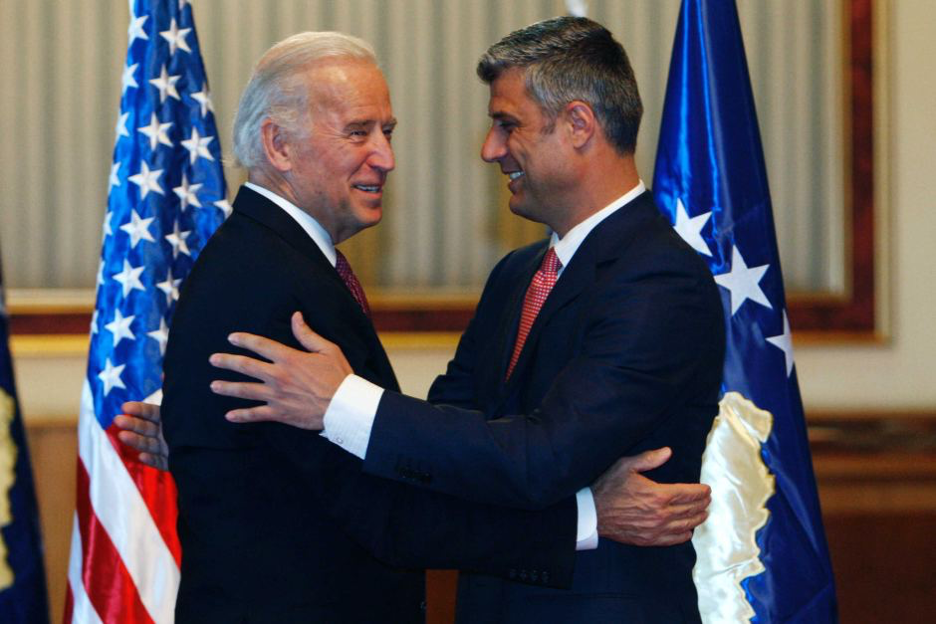
Part III of our exclusive Biden Series on Joe Biden’s foreign policy positions through the years: The Balkans
In his 2008 memoir, Promises to Keep, then Democratic Party presidential candidate Joe Biden touted his leadership on the Balkan conflict as one of his two proudest moments in public life. He pushed a reluctant Clinton administration to arm Bosnian Muslims in the early 1990s and to use air power to suppress conflict in Serbia and Kosovo.[1]
Biden reiterated the same theme in a January 2020 interview with NBC, telling Lester Holt: “Look, I’m the guy that started the effort to make sure we took down the guy who was engaged in genocide in the Balkans: Slobodan Milošević.”[2]
But was there really a genocide in the Balkans led by Milošević and was Biden’s involvement in the conflict really something to be proud about?
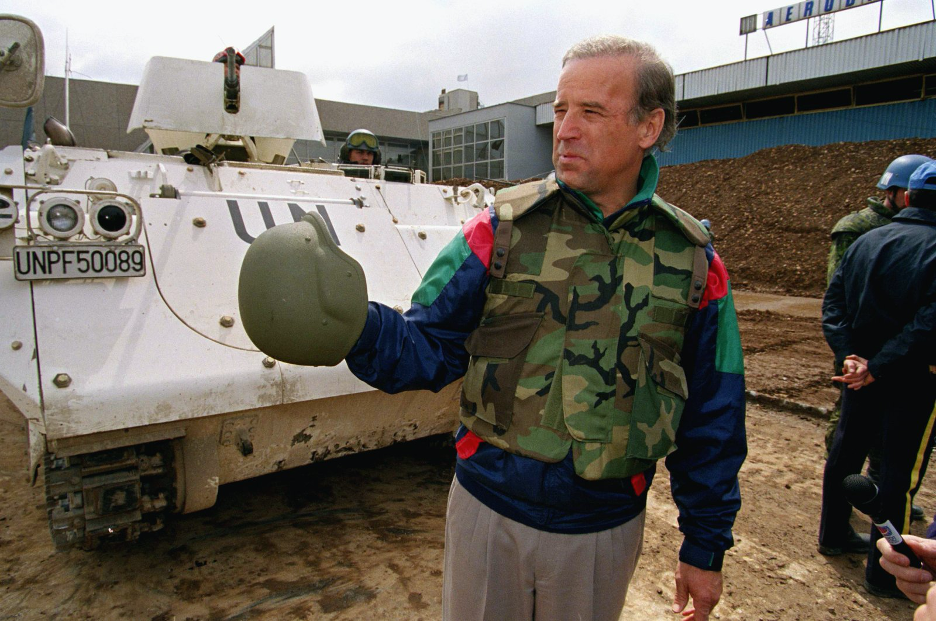
Another War Supported by Liberals
The Balkan Wars are overshadowed by wars in Iraq, Afghanistan and Vietnam as examples of misguided military intervention—or are considered a positive display of U.S. power.
The list of liberal luminaries who supported the Balkan wars included: Todd Gitlin, Susan Sontag, Vaclav Havel, Elie Wiesel, Bernie Sanders, Paul Wellstone, Michael Waltzer, and Christopher Hitchens.
Biden wrote in Promises to Keep that Bosnia was for him a “crucible” which
changed his mind about the military. I came to the Senate trying to stop the Vietnam War. Like a lot of my generation, when we thought [about the] military, we thought [about] Dr. Strangelove—Slim Pickens riding on a bomber, Generals using helicopters to go to lunch at the River Gauche. That was the image, but if you ask me today to go back and pick the 20 brightest, most informed individuals I’ve worked with in government, twelve would be military.[3]
The shifting attitude that Biden personified was predicated in part on the military’s development of new technologies that ensured greater surgical precision in bombing—at least in the popular impression—and which enabled operations to be carried out without any U.S. casualties, coupled with the framing of wars as necessary to halt ethnic cleansing and genocide.

President Bill Clinton at the time was looking for a war that could redeem the nation’s honor and revitalize the legitimacy of U.S. military power after Vietnam. According to a friend, Clinton would lament that “the generation before him was able to serve in a war [World War II] with a plainly noble purpose, and felt ‘almost cheated’ that ‘when it was his turn he didn’t have the chance to be part of a moral cause.’”[4]
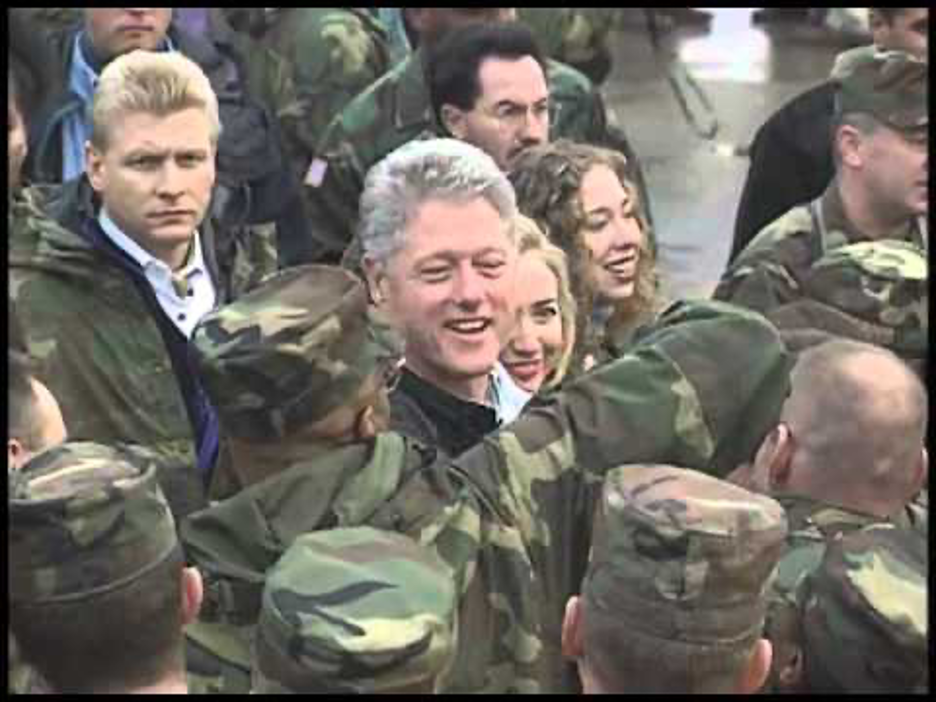
The moral cause that Clinton and Biden embraced, unfortunately, was a pyrrhic one based on the delusion that the Bosnian Muslims—whom the U.S. allied with—were striving for a multicultural society, and that the Serbs were heirs to the Nazis.
CovertAction Magazine (see Diana Johnstone’s article “Seeing Yugoslavia Through a Dark Glass” in our CovertAction Quarterly back-issue) pointed out at the time that the Balkan War was as atrocious as any war in U.S. history—it was rooted in false pretexts, helped intensify ethnic cleansing, and led to the breakup of the Yugoslav federation, which Biden later adopted as a model for dividing Iraq along ethnic lines.

In a speech before the Senate on December 13, 1995, Biden denounced Serb leaders Ratko Mladić and Radovan Karadžić, along with Milošević, as war criminals who he said were “no better than Himmler and Goebbels [infamous Nazi leaders].”[5]
This latter assessment was contradicted by intelligence reports which pointed to atrocities on all sides of the conflict and exoneration of Milošević on charges of genocide before the International Criminal Tribunal for the former Yugoslavia (ICTY).
The worst act of ethnic cleansing in the war was carried out not by the Serbs but by Croat forces allied with the United States in Operation Storm, which was planned with the assistance of a U.S. mercenary company, Military Professional Resources, Inc. (MPRI).
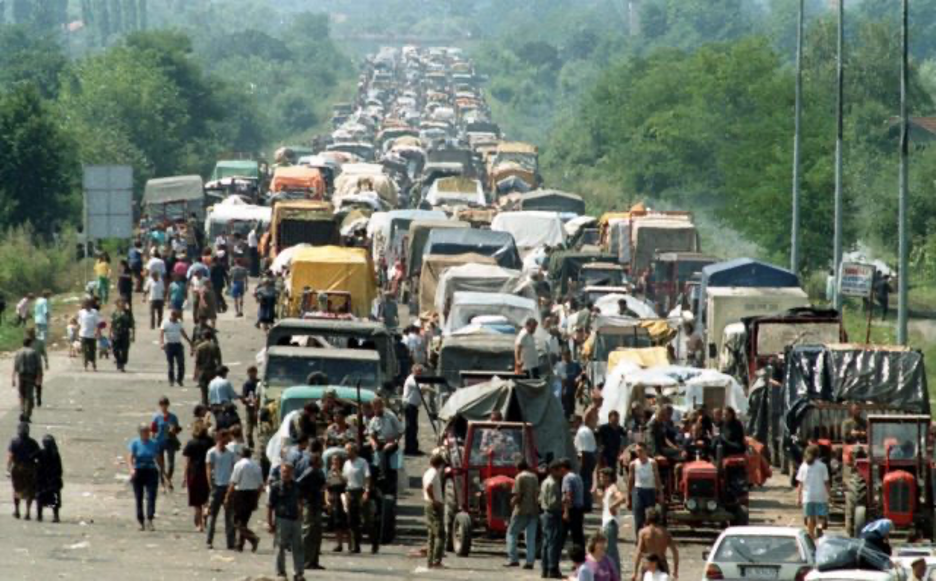
MPRI helped the Croat army to implement an “air, land and battle doctrine” and provided real time-coded and pictorial information from U.S. reconnaissance satellites over Krajina to Croat commanders. It also trained units directly implicated in war crimes.[6]
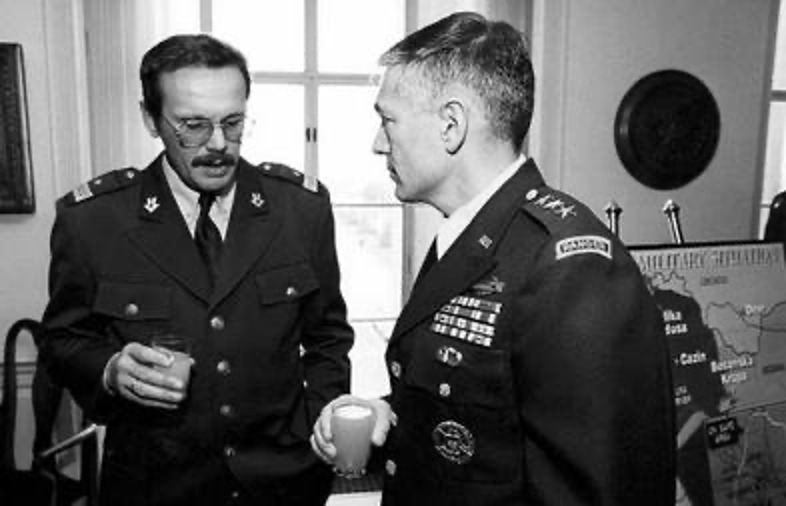
Serb victims later sued MPRI for complicity in genocide, stating that the company was aware of the pro-Nazi sentiments of Croat leader Franjo Tudjman and his henchmen and that “there could be no doubt of what the training and armaments that MPRI was going to provide.”[7]
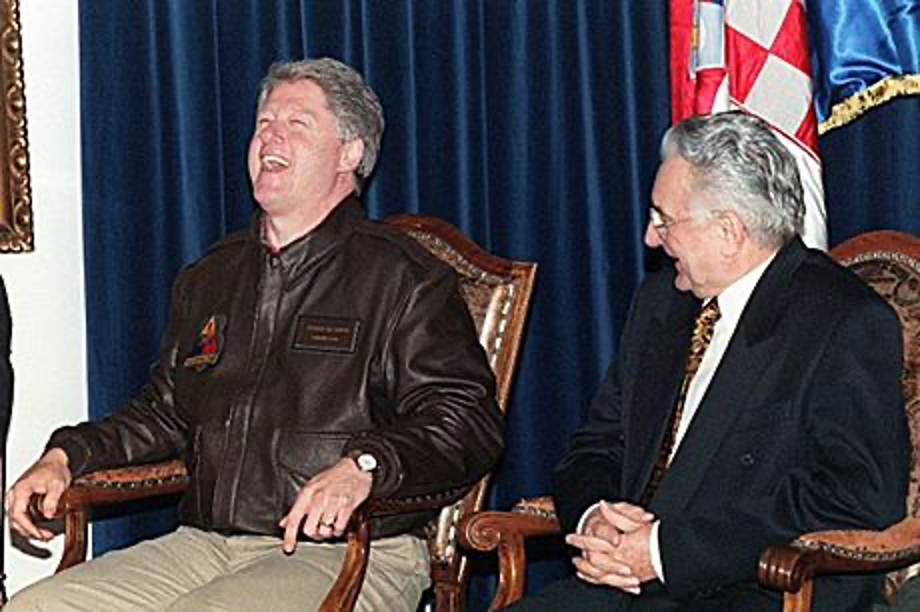
The other main U.S. allies were the Bosnian Muslims, whose soldiers were known for chopping off the heads of Serb fighters that they had killed.[8]
Bosnian Muslim leader Alija Izetbegović had been arrested for his activities in World War II when he allegedly recruited young Muslims for a military unit organized by the SS Gestapo. A manifesto that he wrote called for “Islamic renewal” and declared: “There can be no peace or coexistence between the Islamic faith and non-Islamic social and political institutions…. the state should be an expression of religion and should support its moral concepts.”[9]
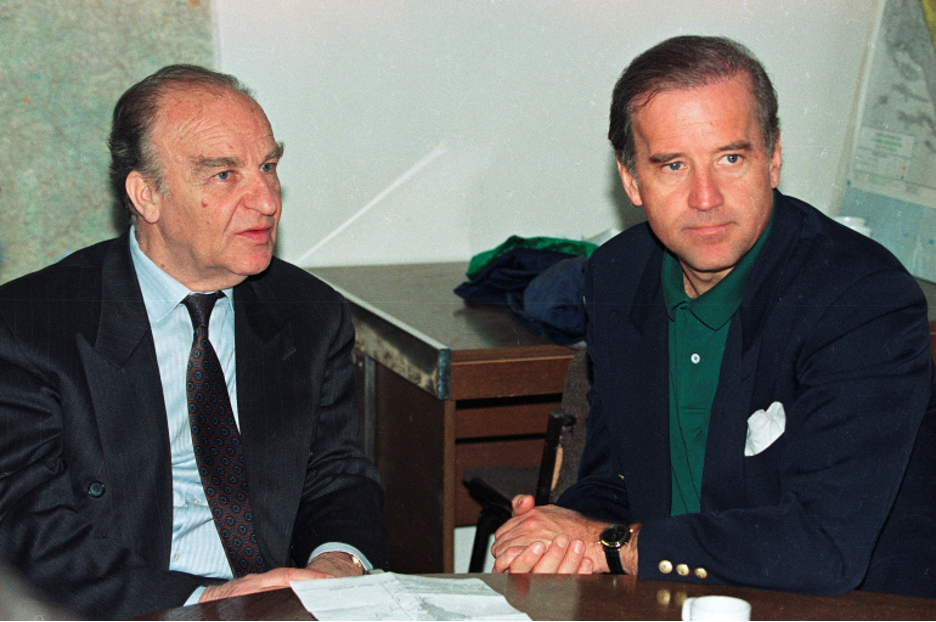
The Muslim fighting regiments backed by the U.S. were bolstered by 4,000 Arab jihadist fighters from Afghanistan, Algeria and other Islamic countries.[10]
Some were recruited through the Al-Kiffah Islamic center in Brooklyn, New York, which was managed by Omar Abdel-Rahman, the infamous “Blind Sheikh” who played a key role in the February 1993 bombing of the World Trade Center.
Two of the participants in fighting against the Serbs, Nawaf al-Hazmi and Khalid al-Mindhar, became 9/11 hijackers, according to the 9/11 Commission report.[11]

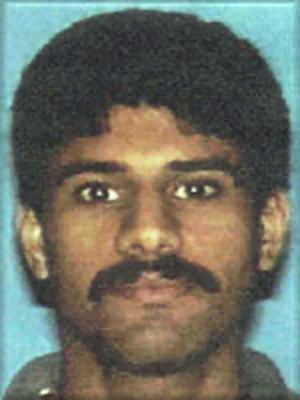
Despite being blamed by Biden and others for starting the war, the Serbs were the main group that was trying to keep Yugoslavia together as a nation. They further supported two diplomatic settlements (the 1992 Lisbon Plan and 1993 Vance-Owen Plan), which were rejected by the U.S.[12]
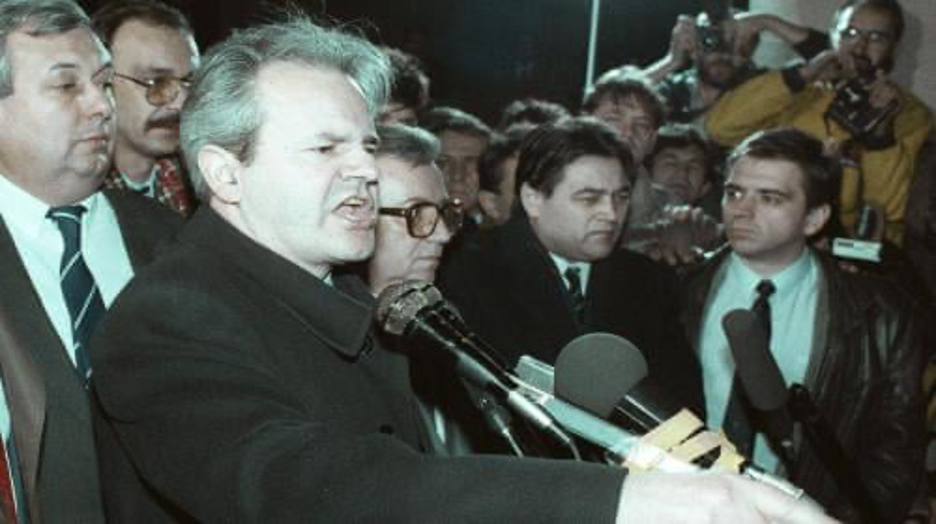
Origins of the War and U.S. Motives
Yugoslavia had first begun to unravel after the death of Socialist Marshal Josep Broz Tito, who ruled it from 1953 to 1980; a golden era in which quality-of-life indicators were high. While joining with the non-aligned movement, Yugoslavia’s annual GDP growth averaged 6.1% under Tito, medical care was free, the literacy rate was about 91% and life expectancy was 72 years.[13]
After Tito’s death, cconomic austerity and privatization imposed by the International Monetary Fund (IMF) enhanced social inequality and led to a collapse in industrial productivity and living standards, creating the conditions which exacerbated ethnic rivalries, and resulted in national disintegration and war.[14] By 1990, independence movements arose in the provinces of Slovenia, Croatia, Macedonia, and Bosnia-Herzegovina (Bosnia), which the U.S. and others particularly Germany were intent on exploiting for their advantage.[15]

During the 1980s, the Reagan administration targeted the Yugoslav economy in a secret memo, NSDD 133, which advocated expanded efforts to promote a “quiet revolution to overthrow Communist governments and parties” while “reintegrating the countries of Eastern Europe into a market-oriented economy.”[16]
While the war formally started in June 1991, after Slovenia and Croatia announced their independence, this strategy was continued through the Clinton era when the United States supported the secessionist movements and imposed sanctions combined with a devastating economic blockade on Yugoslavia—even though the World Court ruled that Serbia was not the aggressor in Bosnia.[17]
The Yugoslav army, dominated by Serbs, tried to put down the secessionist rebellions and occupied Croatia. The fledgling Croat army struck back by driving out two-thirds of the Serbs from the capital of Zagreb and torturing and raping Serbs in cities like Vukovar.[18]
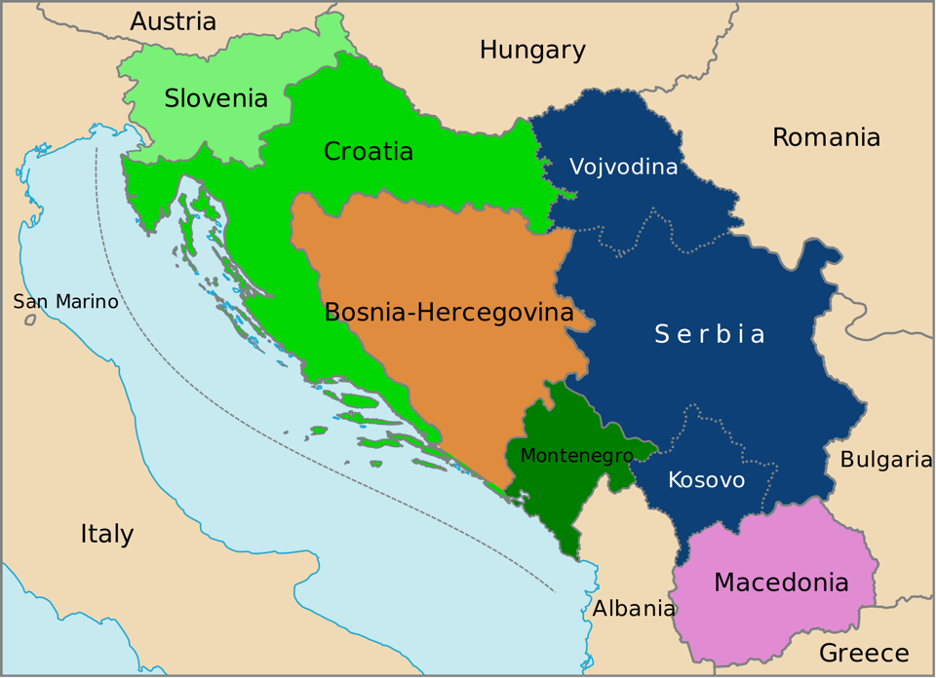
On October 14, 1991, Muslim and Croat legislators in Bosnia announced their secession from Yugoslavia. Radovan Karadžić, a psychiatrist who considered himself the greatest Serb leader since Karadjordje (AKA “Black George”), who had led a Serb uprising against the Ottoman Turks in 1804, subsequently declared an independent Serb Republic of Srpska.[19]
The Bosnian Muslim army—which fought primarily against the Serbs—was helped by U.S. Special Forces advisers, and wore U.S. military uniforms supplied by U.S. military contractors.[20]
U.S. Special Forces also trained the Albanian-dominated Kosovo Liberation Army (KLA) in the effort to unseat Milošević, who was considered a relic of a bygone era as the last socialist leader in Europe.
A key purpose underlying U.S. military intervention in the Balkans was to justify the existence of the North Atlantic Treaty Organization (NATO) following the end of the Cold War and to begin to facilitate its expansion into Eastern Europe, for which Biden was a strong proponent.[21]
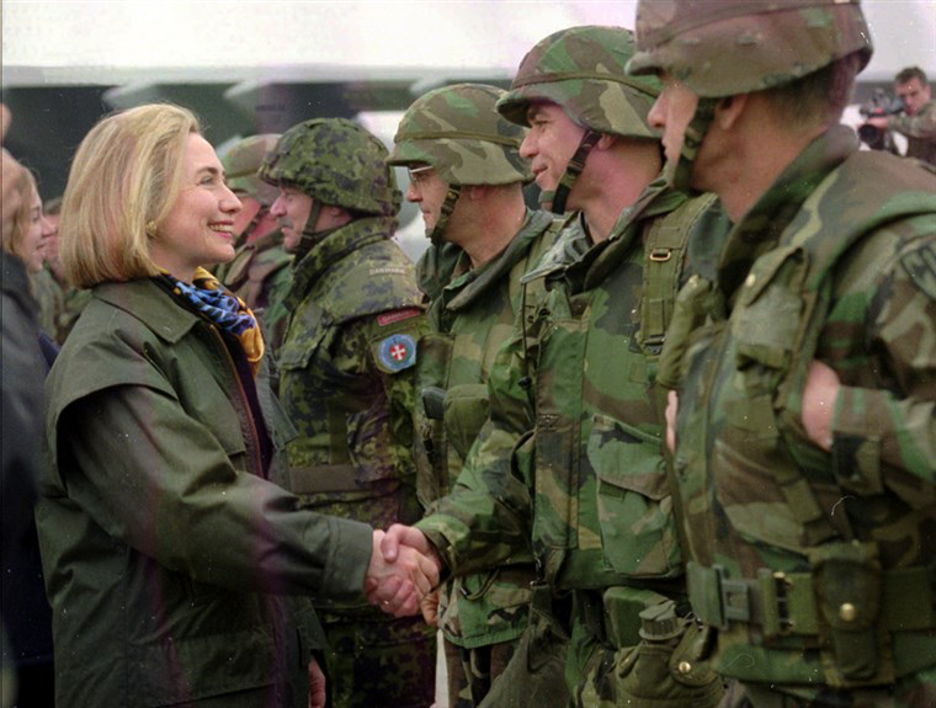
In 1999, at the time of the Kosovo war, President Bill Clinton began promoting the Southeast European Trade Initiative, which eliminated tariffs on a host of imports from the Balkans, with the exception of Serbia under Milošević who was resistant.[22]
The U.S. succeeded further in expanding its network of overseas military bases with the construction of Camp Bondsteel on 775 expropriated acres of rolling countryside near the Macedonian border as a spoil of victory.
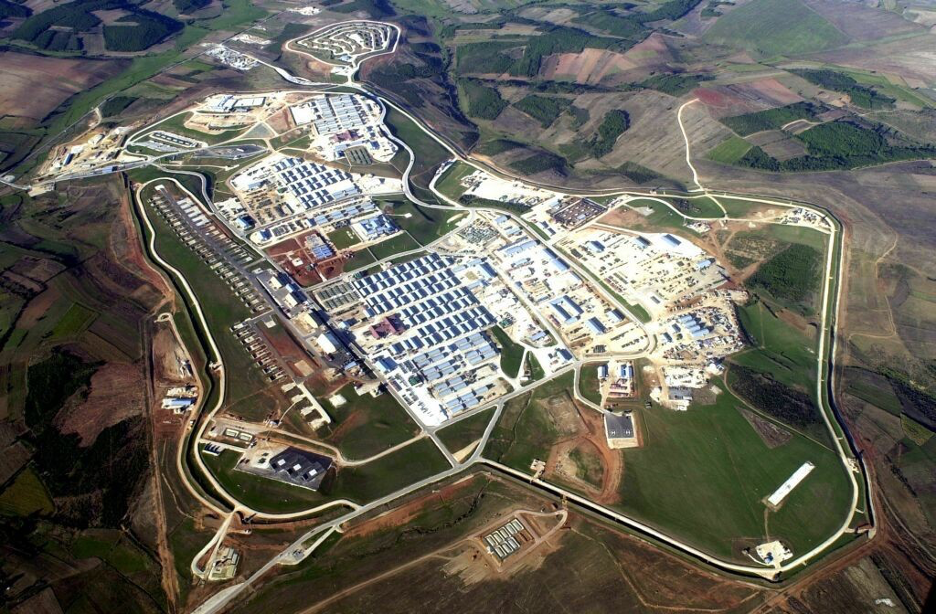
Biden wrote in his memoir that Camp Bondsteel provided a “strong statement of U.S. intentions” in the war.[23] A roadway next to the base characteristically was named after Joe’s son, Beau Biden, who served as a legal adviser in Kosovo.[24]
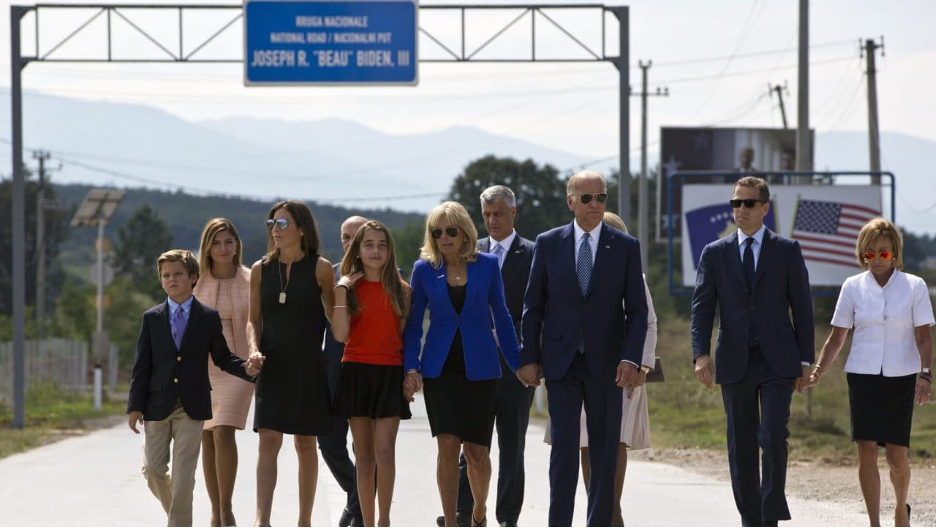
In the Shadow of Averell Harriman
As we know, Biden started his Senate career promoting troop withdrawals from Vietnam but, by the 1990s, he had transformed himself into a strong proponent of socalled “humanitarian intervention.”
Richard C. Holbrooke recalled that, when he was nominated as assistant secretary of state for Europe in late 1994, Biden “in no uncertain terms made it clear to me that the policy on Bosnia had to change and he would make sure it did. He believed in action, and history proved him right.”
Biden’s interest in Yugoslavia dates back to the late 1970s when he accompanied W. Averell Harriman and his wife Pamela on a trip to Yugoslavia to attend the funeral of Eduard Kardelj, Tito’s intellectual mentor.
A son of one of the original robber barons who founded the legendary Wall Street firm, Brown Brothers & Co., Harriman served as U.S. ambassador to the Soviet Union 1943-1946, Secretary of Commerce 1946-1948, Governor of New York 1955-1958 and Undersecretary of State for Political Affairs under John F. Kennedy and Lyndon B. Johnson.[25]
Biden wrote in his memoir that he had been “adopted by Harriman” when he got to the Senate in 1972 as a “thirty-year old kid.”[26]
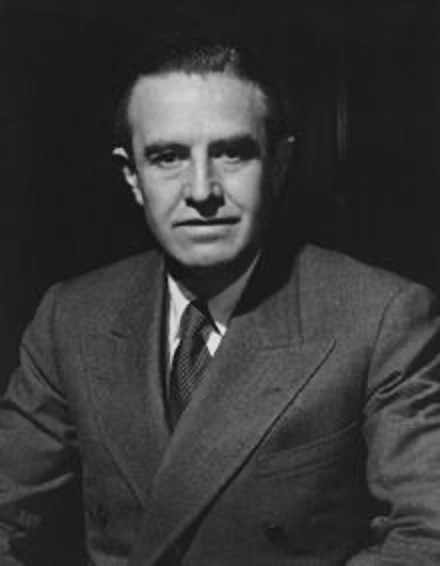
During their visit, Harriman predicted that the Soviet Union would collapse and told Joe that he should “get to know Yugoslavia” because it was an “area we could bring into the 21st century as an ally.”[27]
Two decades later, as a now-prominent member of the Senate Foreign Relations Committee, Biden helped see to it that Harriman’s ambition was fulfilled.
Biden wrote in his memoir that his interest in Yugoslavia was rekindled in 1991 when he was visited in his office on K Street by a Croatian Roman Catholic monk who recounted to him how the Serbs had desecrated the Catholic shrine in Medjugorje in southern Bosnia, which was known as the Lourdes of Bosnia.[28]
The monk asked him “why, as a staunch supporter of Israel, he wasn’t paying attention while Catholics were being killed [by the Serbs].”[29]
At the time, Biden was chairman of the Senate Foreign Relations Committee’s Subcommittee on European Affairs. He decided to sponsor hearings on the breakup of Yugoslavia with the purpose of arousing public indignation at Serb atrocities.
When Milošević’s ambassador, a “well-tailored and obsequious fellow,” showed up in Biden’s office, suggesting that Biden had it wrong, that the Serbs were the “good guys” who patterned themselves “after you,” and that the Muslims in Bosnia would make an Islamic state, he invited Biden to meet with Milošević.[30]
Biden took the ambassador up on his offer in April 1993 and traveled to Sarajevo. Rather than hearing out his perspective, however, he confronted Milošević—whom he compared to a mob boss—telling him to his face that he was a “damned war criminal who should be tried as one.”
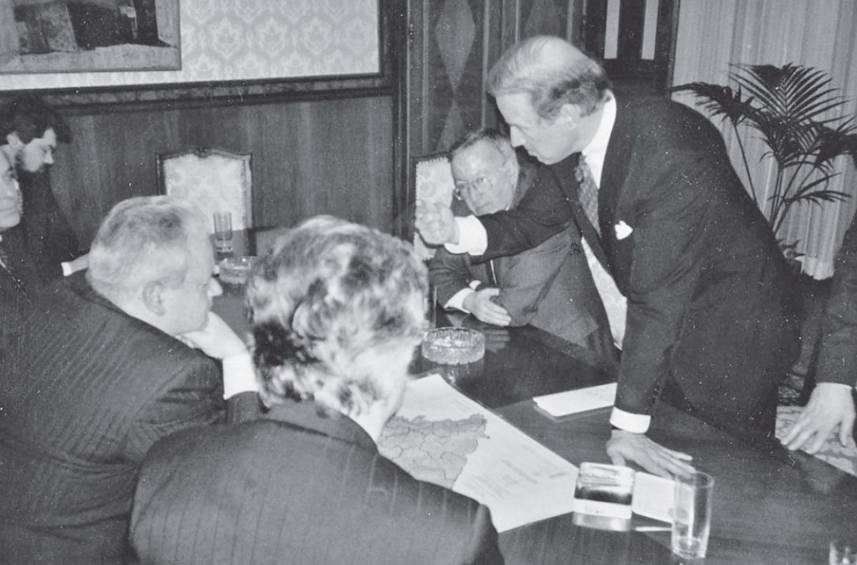
Biden later told Congress that he had emerged from the meeting convinced that Milošević was a “man with an agenda that was anathema to our interests and was literally genocidal.”
Biden said that “once firmly established as the unchallenged boss of Serbia,” Milošević had “cynically provoked successive crises in Slovenia, Croatia, Bosnia and Herzegovina, and Kosovo in order to hold onto power by distracting public attention from his corrupt mismanagement of the Serbian economy and state.”
In another speech before the Senate Foreign Relations Committee in May 1993, Biden specified that the conflict in the Balkans was initiated by “Serb expansionism and aggressionism” and “fascist thuggery on the march” and was “no more a civil war than Germany, Czechoslovakia, and Austria had civil wars” in the 1930s.[31]
Biden’s interpretation ignores the fact that Milošević had worked to try to preserve the Yugoslav federation along with a Titoist policy of non-alignment with the U.S. and West.
In his memoir, Biden described a British helicopter pilot in Bosnia who told him “they’re all bad, they’re all bad,” as “pernicious, like Stock character in a Noel Coward play, a lethal mix of self-importance and willful ignorance.”[32]
Biden claimed that the indifference to Serb atrocities in the U.S. was the result of the prejudice against Muslims, stating in one emotional address before the Senate that “if these were not Muslims [being victimized], the world would have reacted, just as if it were not Jews in the 1930s.”
These comments display how Biden advanced the case for war by exploiting liberal guilt over the mistreatment of minority groups and abandonment of the Jews during the Holocaust.
Biden wrote that in “the 23 years I have been here [Senate Foreign Relations Committee], there is not another issue that has more upset me, angered me, frustrated me, and occasionally made me feel a sense of shame about what the West, what the democratic powers of the world are allowing to happen. I’m tired of all this.”
This was another example of clever political strategizing as Biden effectively cast himself as an anti-establishment crusader morally repulsed by the powers that be and their refusal to stand up for the world’s oppressed—all while he was lobbying for war.
“Lift and Strike” and the Road to Dayton
In 1992, Biden sponsored a law authorizing assistance to Bosnia through a drawdown of up to $50 million in Defense Department stocks of military weapons and equipment.
Upon returning from his 1993 trip to Sarajevo—which he described as resembling “Dresden [in World War II] with graffiti”[33]—Biden issued a 36-page report laying out eight policy proposals to deal with Milošević, including airstrikes on Serb artillery.
Biden subsequently co-sponsored a “lift and strike” proposal with Senate majority leader Bob Dole (R-KS) and Joe Lieberman (D-CT) that would lift an arms embargo, which Biden likened to “an act of moral rape,” followed by air strikes.
The Clinton administration worked around the arms embargo by establishing an illegal arms pipeline to the Bosnian Muslims and Croats through Iran, which became an open secret.[34]
On August 28, 1995, Clinton ordered bombing strikes over Bosnia under Operation Deliberate Force, which garnered almost zero public opposition.
The tide of opinion had shifted when the Bosnian Serbs overran the eastern mountain town of Srebrenica on July 14th and massacred Muslims.
In a preview of the tactics used to sell war in Iraq in 2003, U.S. Ambassador to the UN Madeleine Albright gave a dramatic performance at the UN where she showed satellite photos of alleged mass graves at Srebrenica—though the photos did not show any actual dead bodies and Albright never made them available for public examination.
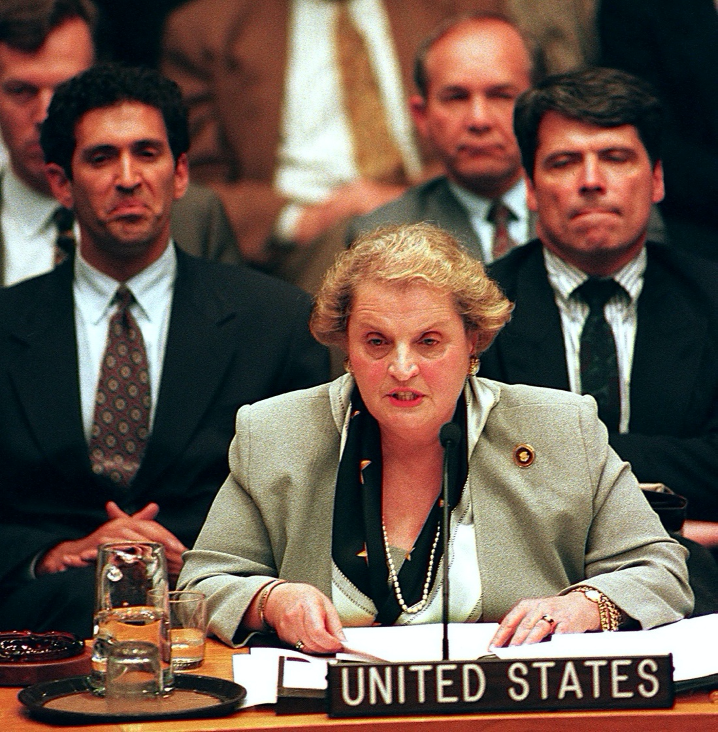
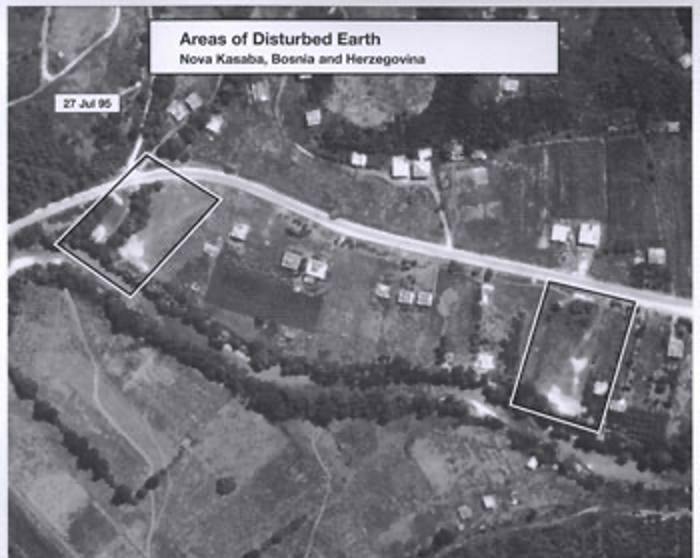
Biden contributed to the drumbeat for war by publicly denouncing the Srebrenica atrocities, writing in his memoir that the day of Srebrenica was his “saddest day in the Senate.”
Biden expressed further indignation at the Serbs alleged shelling of Sarajevo’s Markale Market Square in two separate incidents on February 5, 1994, and August 28, 1995, just two days before Operation Deliberate Force was launched.
Independent investigators arrived at the conclusion that the Bosnian army carried out the shelling and tried to blame the Serbs in order to show them in a bad light and “tilt international support in their favor,” in the words of a British Lieutenant General.[35]
Operation Deliberate Force resulted in the deaths of more than 200 Bosnian Serbs, including 10 civilians at a hospital in the Sarajevo suburb of Blazuj.[36]
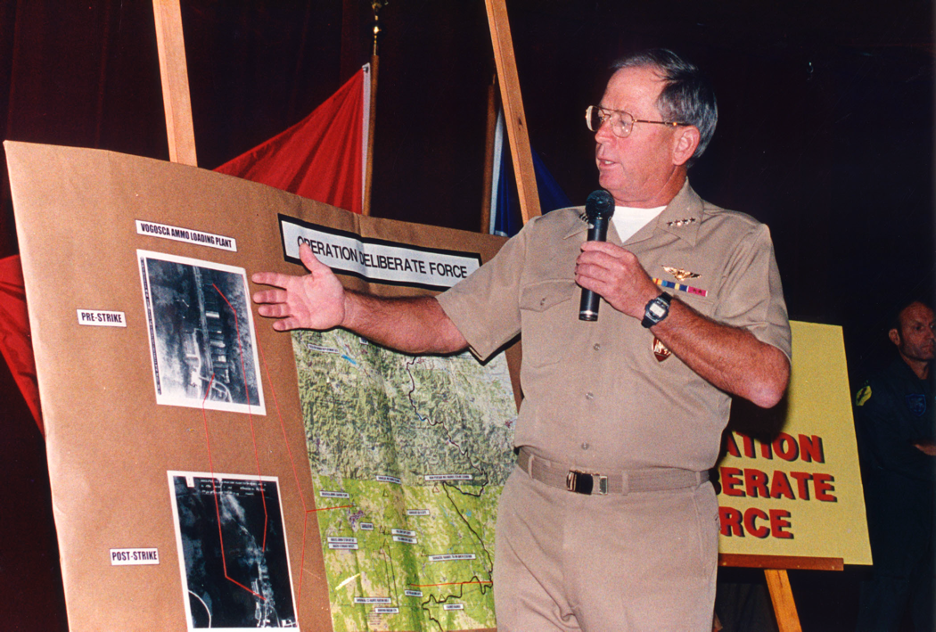
It was followed up by the signing of the Dayton Accords—a neocolonial agreement which legitimized the occupation of Bosnia by 60,000 NATO troops, 20,000 of them from the U.S., and drafting of a new constitution granting full executive powers in all matters to a Swedish official, Carl Bildt, appointed by the UN Security Council, who could overrule the prime ministers and appointed ministers.
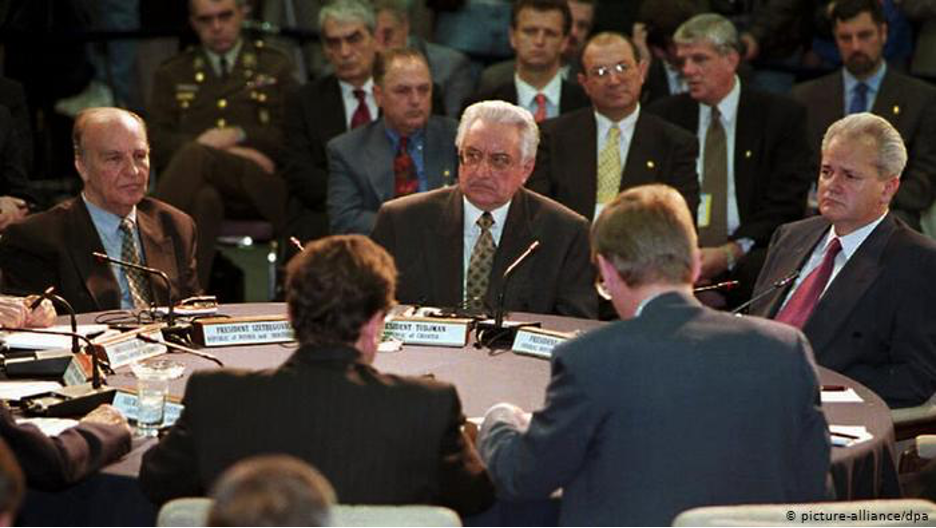
Saving or Costing Lives?
Biden told the Baltimore Sun that if the “lift and strike” proposal had been adopted earlier, genocide could have been averted.
The Bosnian Serbs had committed the “largest mass murder [at Srebrenica] in Europe since the days of Adolf Hitler,” which Biden said he had warned about in 1993 when he wrote “if the West does not act, the eastern town of Srebrenica would become “’the Guernica of our time.’”[37]
The latter analogy was misleading because the killing at Srebrenica was not one-sided like Guernica, which was bombed by the Nazis during the Spanish Civil War.
The massacre of Muslims by Bosnian Serbs at Srebrenica—whose numbers remain in dispute—was preceded by large-scale killing of Serbs by Muslim regiments under the command of Naser Orić, who bragged about killing 114 Serbs in one single incident.[38]

Curiously, few human remains were ever found near Srebrenica’s killing fields. Autopsy reports also revealed that many of the Muslims died from battle-related wounds.[39]
In pressing for military intervention, Biden consistently played up Serb atrocities, claiming before the Senate and again in his memoirs that the Serbs ran torture, death and rape camps[40]— allegations that are difficult to corroborate, and which President Izetbegovic admitted before his death were designed to trigger a bombing campaign by western powers.[41]
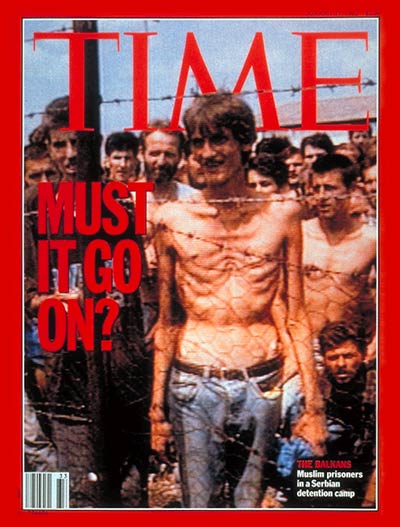
In the 2008 vice-presidential debate with Sarah Palin, Biden claimed that his recommendations on Bosnia “saved tens of thousands of lives.”
In fact, it could be argued that they cost tens of thousands of lives.
The terms of the Dayton agreement that ended the conflict were more favorable to the Bosnian Serbs than the 1993 Vance-Owen Plan, which Milošević, had agreed to, but Biden, following the lead of the Clinton administration, rejected.[42]
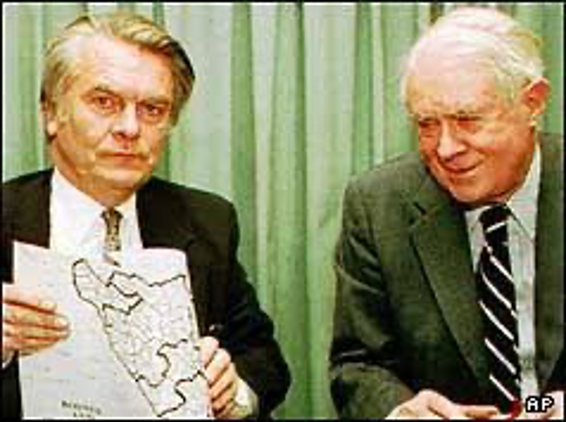
Biden called the Vance-Owen plan “profoundly flawed” in its “approach of creating separate ethnic enclaves,” and told the Senate Foreign Relations Committee that it would “incite violence, rather than discouraging it.”[43]
However, if Vance-Owen had been signed, the war would have ended two years earlier than it did and much bloodshed would have been avoided.
Biden and the Kosovo War
In 2016, during meetings with Serbian Prime Minister Aleksandar Vučić, Biden offered condolences for the victims of the bombing in Kosovo, which included between 500 and 2,000 civilians.[44] The bombing had intensified the level of ethnic cleansing and left carcinogens in the air and radioactive waste from the use of depleted uranium.[45]
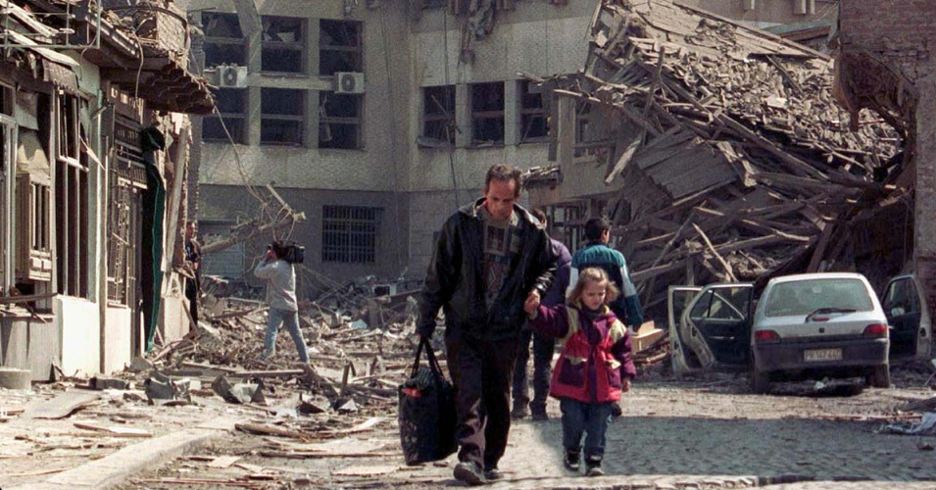
Seventeen years earlier, Biden had told CNN that Clinton’s authorization of the bombing was “absolutely correct,” warning of the consequences of inaction: “[Yugoslav president Slobodan] Milošević will engage in ethnic cleansing. The number of refugees will be in the magnitude of tens of thousands. The region will be destabilized. And our interests will be badly hurt,” Biden said.
As a member of the Senate Foreign Relations Committee, Biden coordinated hearings in the Spring and fall of 1999 that gave a platform for hawks like Robert Kagan, then a senior associate of the Carnegie Endowment for International Peace, Ivo Daalder, a senior fellow at the Brookings Institution, former National Security Adviser Zbigniew Brzezinski, Eliot Cohen, director of the Johns Hopkins School of Strategic Studies, Senator Robert Dole (R-KS), who had strong ties with the Croat lobby, and Secretary of State Madeleine Albright.
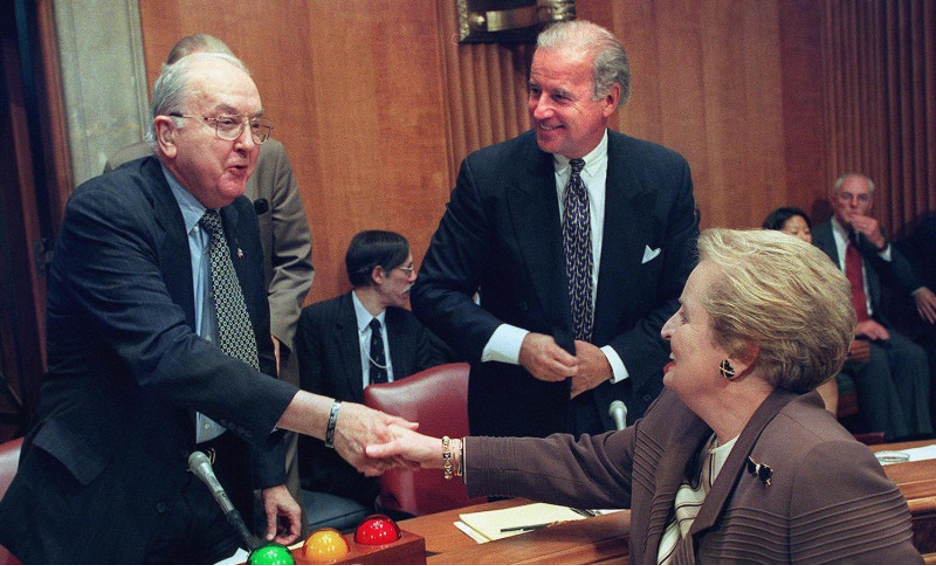
With Senator John McCain (R-AZ), Biden sponsored a Senate resolution authorizing President Clinton to use “all necessary force,” including ground troops, to win the war in Kosovo.
Clinton had not asked for such authority and believed the war could have been won without ground forces.[46]
Biden’s aim in supporting intervention was to protect the Albanian minority in Kosovo from ethnic cleansing directed by the Serbs.
In attempting to fulfill Averell Harriman’s old ambition, Biden further advocated for regime change in Serbia, which was achieved when Milošević resigned on October 7, 2000, after a “color revolution” supported through the National Endowment for Democracy (NED), and was put on trial at The Hague.
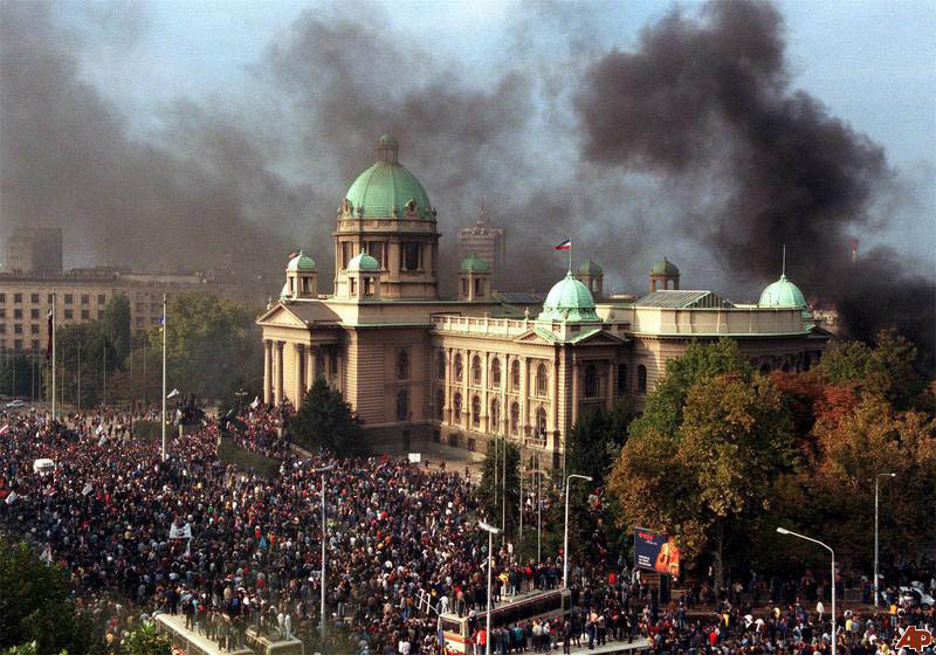
Biden had called the Serbs “illiterates and “degenerates” on CNN.[47]
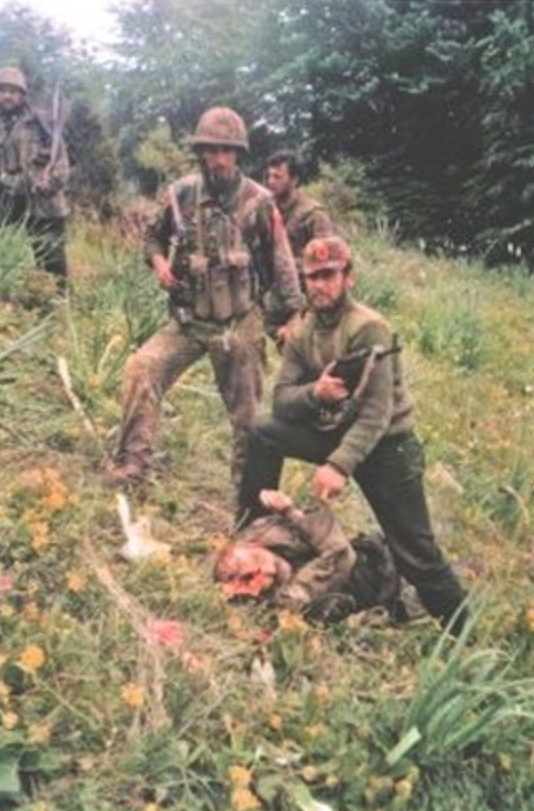
He exaggerated the level of Serb atrocities and overlooked the fact that the Albanian-led Kosovo Liberation Army (KLA) had been branded as a terrorist organization by the U.S. State Department mere months before the war started.[48]
The KLA’s ambition was to rule Kosovo and establish a federation with neighboring Albania while expelling the Serb minority which had been dominant in Kosovo.[49]
Kosovo had sentimental value to the Serbs as the site of a famous 14th century battle where they were defeated by the Ottoman Turks.
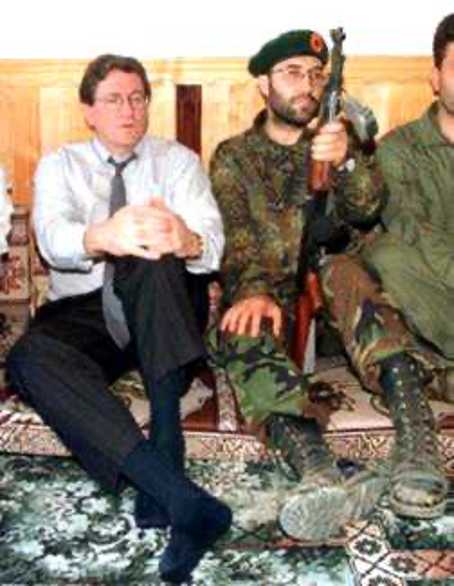
In 2010, now Vice President Biden referred to KLA leader Hashim Thaçi as the “George Washington of Kosovo,” and later said that he had “showed great courage” in “bringing democracy to Kosovo.”
In June 2020, Thaçi had to cancel a trip to Washington, however, because he had been indicted by the ICTY in The Hague for war crimes and crimes against humanity—crimes rangin from murder, enforced disappearances and torture.[50]
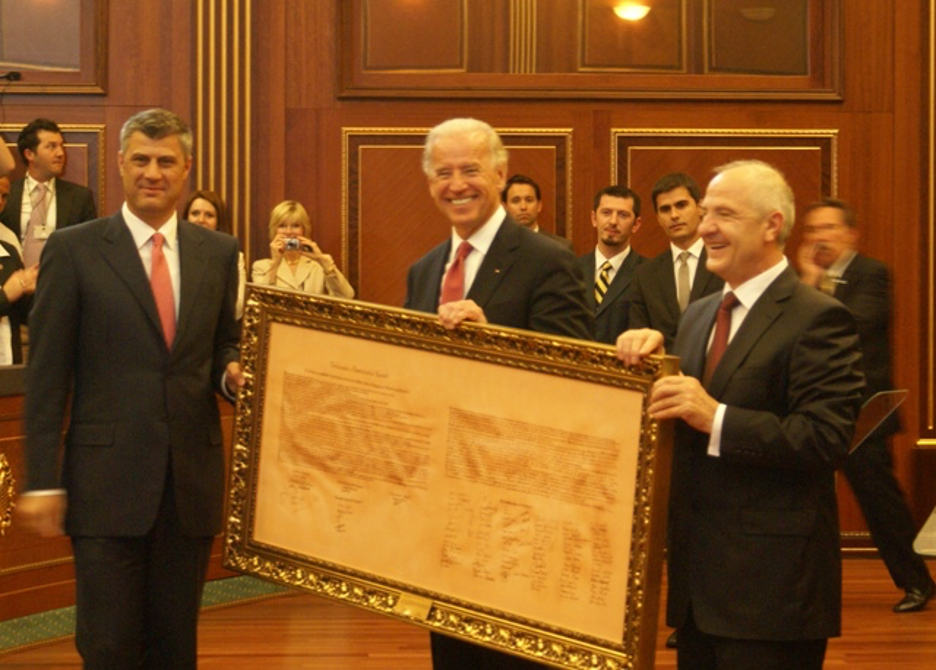
Previous reports had linked Thaçi to organized crime and to a human organ smuggling operation involving the selling of Serb organs that were extracted during violent interrogations.[51]
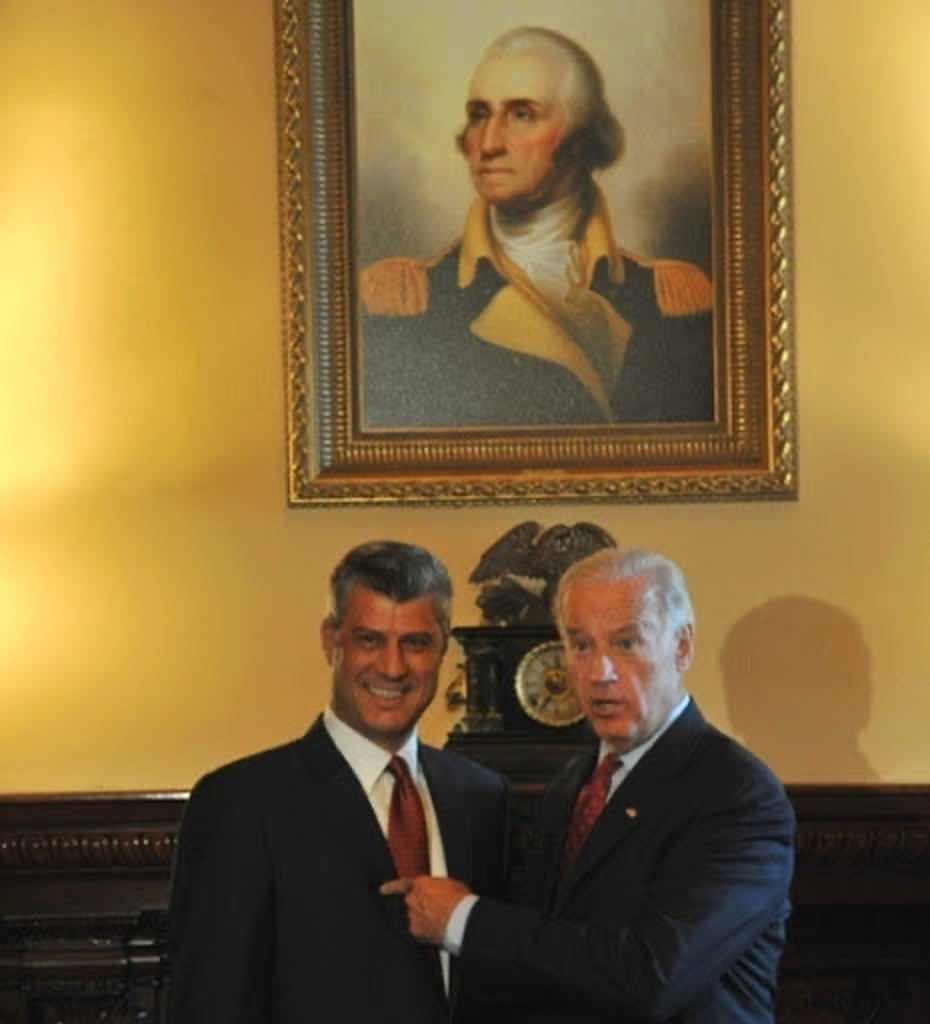
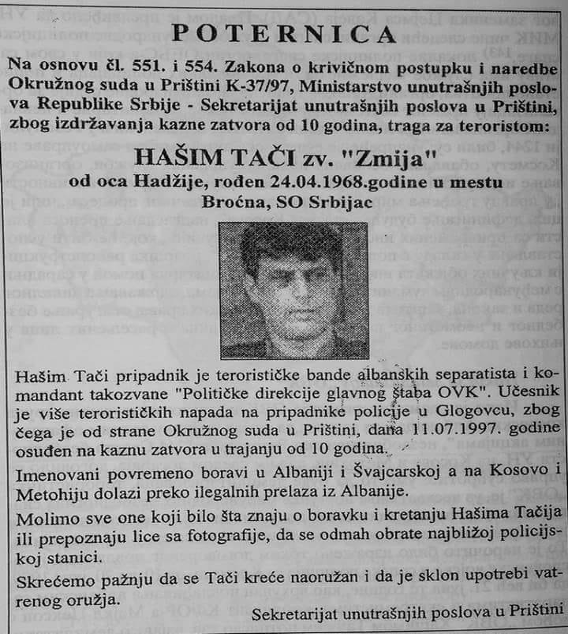
When Biden visited Kosovo’s capital of Pristina during his Vice Presidency, he was greeted enthusiastically by waving crowds.[52]
However, Kosovo experienced significant problems following the U.S.-NATO bombing, including huge unemployment and staggering political corruption which resulted in Kosovo emerging at the center of the international drug trade and prostitution rings in Europe.
Many of Kosovo’s resources were privatized and sold to Western multinational corporations and thousands of Serbs and ethnic Roma were driven out. The police service trained by the U.S. was “dominated by fear, corruption and incompetence.”
The country had the feeling of being a colony ruled by viceroys appointed by the U.S. and NATO and dominated by a giant U.S. military base, Camp Bondsteel, which housed Kosovo’s main prison.[53]
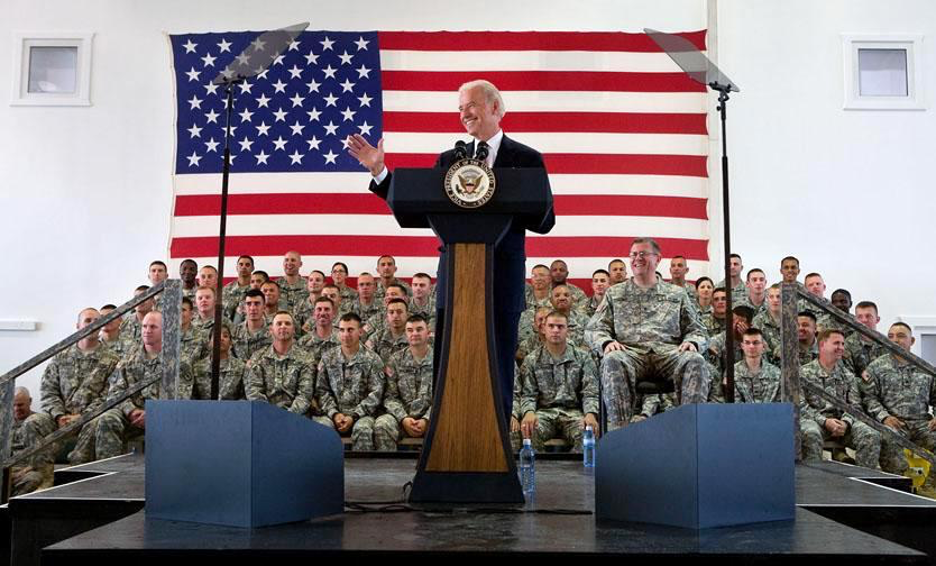
In December 2004, plans went forward for the construction of a $1.2 billion Trans-Balkan pipeline south of Camp Bondsteel financed by the Overseas Private Investment Corporation.
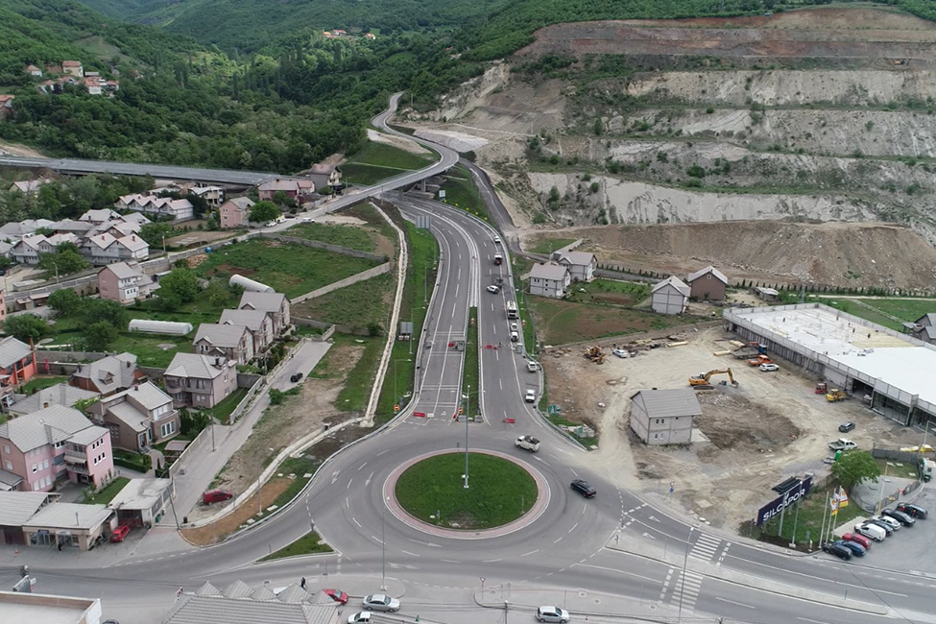
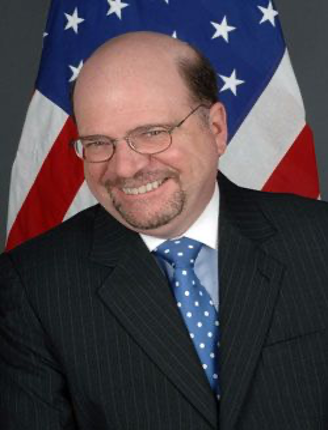
U.S. Ambassador Christopher Dell also helped Bechtel—whom he went on to work for and provided over $400,000 to Democratic Party candidates in the 1990s—secure a $600 million highway building contract.[54]
Biden’s connection to Bechtel went through his chief of staff Bernard Toon, who became a lobbyist for them.[55]
The oil pipeline and Bechtel construction projects, along with the granting of exploration rights to a consortium of U.S., French and Swedish investors for the lucrative Trepča mining complex, pointed to another hidden motive for the Kosovo war beyond the so-called promotion of “human rights.”
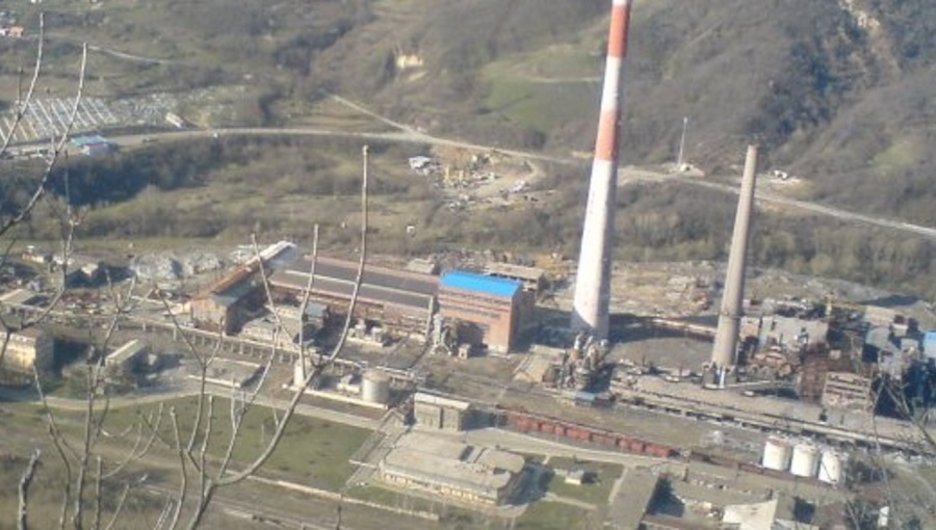
The questions for us today include: What new Kosovos and Bosnias will take root under a Biden presidency, and will liberals oppose these wars?

Jeremy Kuzmarov is Managing Editor of CovertAction Magazine and author of four books on U.S. foreign policy, including Obama’s Unending Wars (Atlanta: Clarity Press, 2019).
[1] Joe Biden, Promises to Keep: On Life and Politics (New York: Random House, 2007).
[2] Ebony Bowden, “Joe Biden exaggerated claim he took lead against Balkan genocide: report,” New York Post, January 10, 2020, https://nypost.com/2020/01/10/joe-biden-exaggerated-claim-he-took-lead-against-balkan-genocide-report/
[3] Biden, Promises to Keep, 272.
[4] John F. Harris, “In Handling a Crisis, a Different President; Aides Note Clinton’s Calm, Steady Focus,” The Washington Post, June 8, 1999.
[5] https://twitter.com/friendsofserbs/status/1265420106361905152?lang=en
[6] See David Gibbs, First Do No Harm: Humanitarian Intervention and the Destruction of Yugoslavia (Nashville, TN: Vanderbilt University Press, 2009).
[7] Genocide Victims of Krajina v. L-3 Communications Corp. and MPRI Inc., in the United States District Court Northern District of Illinois, Eastern Division. The judge said that he was not qualified to preside over the case because the crimes occurred in Bosnia. Croat army units trained by MPRI killed 185 Serb civilians in Mrkonjić in southwestern Bosnia. See also Tony Geraghty, Soldiers of Fortune (London: Pegasus Books, 2009), 175. U.S. warplanes provided further support to Operation Storm by bombing a Krajina Serb airfield and destroying radar installations, allowing Croatian planes free rein to bomb and strafe columns of fleeing civilians. See https://casetext.com/case/genocide-victims-of-krajina-v-l-3-servs-inc.
[8] Author interview, survivor of Bosnian war, Moscow, Russia, May 9, 2018; Diana Johnstone, Fools Crusade: Yugoslavia, NATO and Western Delusions (New York: Monthly Review Press, 2002), 61; William F. Engdahl, Manifest Destiny: Democracy as Cognitive Dissidence (mine.books, 2018), 108, citing ICTY court records.
[9] Roger Peace, Jeremy Kuzmarov, and Brian D’Haeselear, “The Post-Cold War Era,” http://peacehistory-usfp.org/post-cold-war-era/; Philip Corwin, Dubious Mandate: A Memoir of the UN (Durham, NC: Duke University Press, 1999), 22; David Binder, “Aliza Izetbegovic, ex-President of Bosnia, Dies at 78,” The New York Times, October 19, 2003, https://www.nytimes.com/2003/10/19/international/europe/alija-izetbegovic-expresident-of-bosnia-dies-at-78.html; Alija Izetbegović, The Islamic Declaration (Sarajevo, 1990).
[10] See John R. Schindler, Unholy Terror: Bosnia, Al Qaida, and the Rise of Global Jihad (London: Zenith Press, 2007); Richard J. Aldrich, “America Used Islamists to Arm the Bosnian Muslims,” The Guardian, April 22, 2002. The Algerians were members of the Algerian Goupe Islamique Armee (GIA) held responsible for massive massacres of Algerian civilians during the Algerian civil war. The Afghan mujahidin had been trained in terrorist methods by the CIA.
[11] Schindler, Unholy Terror; Lt. Col. John Sray, “Selling the Bosnian Myth to America: Buyer Beware,” U.S. Army, Foreign Military Studies Office, Fort Leavenworth, Kansas, October 1995, http://www.slobodan-milosevic.org/news/fmso1095.htm. The mujahadin’s terror arsenal found included fragmentation bombs disguised as children’s toys.
[12] Gibbs, First Do No Harm; Evangelos Mahairas, “The Breakup of Yugoslavia,” in Hidden Agenda: U.S./NATO Takeover of Yugoslavia, John Catalinotto and Sara Flounders, eds. (New York: International Action Center, 2002), 47-54; Sarah Flounders, NATO in the Balkans (New York: International Action Center, 1998), 48, 49.
[13] James A. Lucas, “Media Disinformation and the War in Yugoslavia,” Global Research, September 5, 2005, https://www.globalresearch.ca/media-disinformation-on-the-war-in-yugoslavia-the-dayton-peace-accords-revisited/899.
[14] Gibbs, First Do No Harm, 46; Michel Chossudovsky, “Dismantling Yugoslavia, Colonizing Bosnia,” Covert Action Quarterly, Spring 1996.
[15] Peace, Kuzmarov, and D’Haeselear, “The Post Cold War Era.” Regarding theories of why the former Yugoslavia descended into ethnic-political wars in the 1990s, see Randy Hodson, Dusko Sekulic, and Garth Massey, “National Tolerance in the Former Yugoslavia,” American Journal of Sociology 99, no. 6 (1994): 1534-558.
[16] Michel Chossudovsky, “Dismantling Yugoslavia, Colonizing Bosnia,” in NATO in the Balkans, Flounders, ed., 82.
[17] Hidden Agenda, Catalinotto and Flounders, eds.
[18] Warren Zimmerman, Origins of a Catastrophe: Yugoslavia and Its Destroyers–America’s Last Ambassador Tells What Happened and Why (New York: Random House, 1996), 75; Gibbs, First Do No Harm, 87; Hidden Agenda, Catalinooto and Flounders, eds., xx.
[19] Zimmerman, Origins of a Catastrophe.
[20] Gary Wilson, “The Dayton Accords Reshape Europe,” in NATO in the Balkans, Flounders, ed., 147. General John Galvin, a former NATO commander and head of West Point, planned and executed Bosnian army offensives.
[21] George Packer, Our Man: Richard Holbrooke and the End of the American Century (New York: Alfred A. Knopf, 2019). Biden oversaw the Senate’s ratification of the admission into NATO of Poland, Hungary and the Czech Republic in March 1998.
[22] Bob Davis, “Clinton to Propose Ending Some Tariffs to Boost Development in the Balkans,” The Wall Street Journal, July 30, 1999.
[23] Biden, Promises to Keep, 289.
[24] Esteban Parra, “Highway in Kosovo named after Beau Biden,” Delaware Online, August 17, 2016, https://www.delawareonline.com/story/news/2016/08/17/road-kosovo-named-after-beau-biden/88895644/
[25] See Rudy Abramson, Spanning the Century: The Life of W. Averell Harriman, 1891-1986 (New York: William Morrow, 1992). Harriman was a strong supporter of the Vietnam War.
[26] Biden, Promises to Keep, 248.
[27] Biden, Promises to Keep, 248.
[28] Biden, Promises to Keep, 246.
[29] Biden, Promises to Keep, 246.
[30] Biden, Promises to Keep, 261.
[31] “Conflict in Yugoslavia,” May 12, 1993, Joseph R. Biden, Jr., Speech before the Senate Foreign Relations Committee, C-Span, https://www.c-span.org/video/?40657-1/conflict-yugoslavia.
[32] Biden, Promises to Keep, 271.
[33] Biden, Promises to Keep, 269. Dresden was mercilessly bombed by the Allies in World War II.
[34] James Risen and Doyle McManus, “U.S. OKd Iranian Arms for Bosnia, Officials Say,” Los Angeles Times, April 5, 1996, https://www.latimes.com/archives/la-xpm-1996-04-05-mn-55275-story.html; Schindler, Unholy Terror, 182.
[35] Cees Wiebes, Intelligence and the War in Bosnia 1992-1995 (Netherlands: LIT Verlage, 2003), 68, David Binder, “Bosnia’s Bombers,” The Nation, October 2, 1995; Sray, “Selling the Bosnian Myth to America”; Gibbs, First Do No Harm, 125, 126. David Owen, a European community negotiator noted that UN personnel had long suspected that the attacks were being undertaken by Muslim units firing on their own people. Such suspicions were confirmed in August 1995 when a French UN team pinpointed some of the sniping to a building which they knew was controlled by Bosnian government forces. Later, several international witnesses testified in the Karadzic trial that the Bosnian Muslims had shelled their own people in order to give NATO a pretext to bomb the Serbs.
[36] Lt. Col. Mark J. Conversino, “Executing Deliberate Force, 30 August – 14 September 1995,” in Deliberate Force: A Case Study in Effective Air Campaigning, Colonel Robert C. Owen, ed. (Maxwell Air Force Base, Alabama: Air University Press, 2000), 161; Tracy Wilkinson, “U.S. Fires 13 Cruise Missiles at Serbia Targets in Bosnia,” The Los Angeles Times, September 11, 1995; David Rhode, “A Reversal of Fortune: Bosnian Serbs as Victims,” The Christian Science Monitor, September 13, 1995. U.S. planes flew two-thirds of the sorties in Deliberate Force.
[37] Guernica was made famous by Pablo Picasso’s painting depicting the savagery of fascist bombing.
[38] Canadian General Lewis MacKenzie has stated that “evidence to date suggests that he (Naser Orić) was responsible for killing as many Serb civilians outside Srebrenica as the Bosnian Serb army was for massacring Bosnian Muslims inside the town.” British journalist Joan Phillips claimed that, by March 31, 1993, “out of 9,300 Serbs who used to live (in the Srebrenica municipality), less than 900 remain…only three Serbian villages remain and around 26 have been destroyed.” Edward S. Herman and Emily Schwartz Greco, “Serb Demonization as Propaganda Coup,” Foreign Policy in Focus, March 19, 2009, https://fpif.org/serb_demonization_as_propaganda_coup/. French General Philippe Morillon testified in the Milošević trial that Orić “took no prisoners,” and that his mass killings from the “safe area” had been the key factor in explaining Serb vengefulness in their takeover of Srebrenica –facts that Biden omits.
[39] See Deconstruction of a Virtual Genocide: An Intelligent Person’s Guide to Srebrenica, Stephen Karganovic et al., eds., NGO Srebrenica Historical Project, The Netherlands (Belgrade: Den Haag, 2011); Edward S. Herman and David Peterson, “The ‘Srbrenica Massacre’ Turns Twenty Years Old,” Dissident Voice, August 5, 2015, https://dissidentvoice.org/2015/08/the-srebrenica-massacre-turns-20-years-old/; RADISLAV KRSTI] BECOMES THE FIRST PERSON TO BE CONVICTED OF GENOCIDE AT THE ICTY AND IS SENTENCED TO 46 YEARS IMPRISONMENT, UN, ICTY Press Release, August 4, 2001, https://www.icty.org/x/cases/krstic/tjug/en/010802_Krstic_summary_en.pdf. The ICTY determined that the Serbs had tried to cover up their crimes by removing bodies from alleged mass graves, however, the logistics of this would have been very difficult in the middle of a war. Eye witnesses who claimed to have observed mass executions at the ICTY were unreliable, including a suspected double agent and Naser Oric’s brother, Melvuddin.
[40] Congressional Record, Volume 141, Number 117 (Wednesday July 19, 1995); Biden, Promises to Keep, 257.
[41] Gibbs, First Do No Harm, 124, 125; Edward S. Herman, “The Politics of the Srebrenica Massacre,” Global Research, July 7, 2005; The Srebrenica Massacre: Evidence, Context, Politics, Edward S. Herman, ed. (Evergreen, Ill: Alphabet Soup, 2011) Sworn affidavits suggest, according to a number of researchers, that more Serbs were raped by Muslims and Croats than vice versa. Herman and Schwartz, “Serb Demonization as Propaganda Coup.” Some of Biden’s allegations were being promoted in the media, whose yellow journalism was reminiscent of the Spanish-American War and World War I when exaggerated stories about German atrocities in Belgium were designed to facilitate U.S. intervention in the Great War. See Phillip Knightley, The First Casualty: The War Correspondent as Hero and Myth Maker (London: Harcourt, Brace, Jovanovich, 1975).
[42] Gibbs, First Do No Harm.
[43] “Conflict in Yugoslavia,” May 12, 1993, Joseph Biden, Jr., Speech before the Senate Foreign Relations Committee, C-Span, https://www.c-span.org/video/?40657-1/conflict-yugoslavia.
[44] “Biden offers condolences for 1999 NATO bombing of Serbia,” The Boston Globe, August 16, 2016, https://www.bostonglobe.com/news/world/2016/08/16/biden-offers-condolences-for-nato-bombing-serbia/y80d75hj4ML9Xbl0fXKiZJ/story.html
[45] See Michael Parenti, To Kill a Nation: The Attack on Yugoslavia (London: Verso, 2002).
[46] Helen Dewar and Juliet Eilperin, “Senate Divided on Kosovo Strategy,” The Washington Post, May 4, 1999, A18, https://www.washingtonpost.com/wp-srv/politics/daily/may99/congress4.htm
[47] Branko Marcetic, Yesterday’s Man: The Case Against Joe Biden (London: Verso, 2020), 141.
[48] See Noam Chomsky, A New Generation Draws the Line: Kosovo, East Timor and the Standards of the West (London: Verso, 2000); James Pettifer, The Kosovo Liberation Army: Underground War to Balkan Insurgency, 1948-2001 (New York: Oxford University Press, 2014).
[49] NATO in the Balkans, Flounders, ed.
[50] Jeremy Kuzmarov, “Biden Compared Indicted War Criminal to ‘George Washington,’” Counterpunch, July 2, 2020, https://www.counterpunch.org/2020/07/02/biden-compared-indicted-war-criminal-to-george-washington/
[51] Kuzmarov, “Biden Compared Indicted War Criminal to ‘George Washington.”
[52] Nebi Qena, “Kosovo’s Crazy For Joe Biden,” NBC News, May 21, 2009, https://www.nbcwashington.com/local/biden-visits-kosovo/1875816/
[53] See Sara Flounders, “Washington Gets a New Colony in the Balkans,” Workers of the World, February 21, 2008, https://www.workers.org/2008/world/kosovo_0228/; Diana Johnstone, “NATO’s Kosovo Colony,” Counterpunch, February 18, 2008, https://www.counterpunch.org/2008/02/18/nato-s-kosovo-colony/; David Binder, “Kosovo Auf Deutsch,” November 18, 2007, Balkananalysis.com. Kosovo also became a haven for Islamic fundamentalism and extremism.
[54] Peter Dale Scott, The Road to 9/11: Wealth, Empire and the Future of America (Berkeley: University of California Press, 2007), 169; Sally Denton, The Profiteers: Bechtel and the Men Who Built the World (New York: Simon & Schuster, 2016), 306. The Houston-based energy company Enron also got a $175-million contract for building and operating a power plant and supplying electricity for the next 20 years—six days after it donated $100,000 to the Democratic Party. Jack Cashill, Ron Brown’s Body: How One Man’s Death Saved the Clinton Presidency and Hillary’s Future (Nashville, TN: WND Books, 2004) 284, 285.
[55] https://www.opensecrets.org/revolving/rev_summary.php?id=76032.
CovertAction Magazine is made possible by subscriptions, orders and donations from readers like you.
Blow the Whistle on U.S. Imperialism
Click the whistle and donate
When you donate to CovertAction Magazine, you are supporting investigative journalism. Your contributions go directly to supporting the development, production, editing, and dissemination of the Magazine.
CovertAction Magazine does not receive corporate or government sponsorship. Yet, we hold a steadfast commitment to providing compensation for writers, editorial and technical support. Your support helps facilitate this compensation as well as increase the caliber of this work.
Please make a donation by clicking on the donate logo above and enter the amount and your credit or debit card information.
CovertAction Institute, Inc. (CAI) is a 501(c)(3) non-profit organization and your gift is tax-deductible for federal income purposes. CAI’s tax-exempt ID number is 87-2461683.
We sincerely thank you for your support.
Disclaimer: The contents of this article are the sole responsibility of the author(s). CovertAction Institute, Inc. (CAI), including its Board of Directors (BD), Editorial Board (EB), Advisory Board (AB), staff, volunteers and its projects (including CovertAction Magazine) are not responsible for any inaccurate or incorrect statement in this article. This article also does not necessarily represent the views the BD, the EB, the AB, staff, volunteers, or any members of its projects.
Differing viewpoints: CAM publishes articles with differing viewpoints in an effort to nurture vibrant debate and thoughtful critical analysis. Feel free to comment on the articles in the comment section and/or send your letters to the Editors, which we will publish in the Letters column.
Copyrighted Material: This web site may contain copyrighted material the use of which has not always been specifically authorized by the copyright owner. As a not-for-profit charitable organization incorporated in the State of New York, we are making such material available in an effort to advance the understanding of humanity’s problems and hopefully to help find solutions for those problems. We believe this constitutes a ‘fair use’ of any such copyrighted material as provided for in section 107 of the US Copyright Law. You can read more about ‘fair use’ and US Copyright Law at the Legal Information Institute of Cornell Law School.
Republishing: CovertAction Magazine (CAM) grants permission to cross-post CAM articles on not-for-profit community internet sites as long as the source is acknowledged together with a hyperlink to the original CovertAction Magazine article. Also, kindly let us know at info@CovertActionMagazine.com. For publication of CAM articles in print or other forms including commercial internet sites, contact: info@CovertActionMagazine.com.
By using this site, you agree to these terms above.
About the Author

Jeremy Kuzmarov holds a Ph.D. in American history from Brandeis University and has taught at numerous colleges across the United States. He is regularly sought out as an expert on U.S. history and politics for radio and TV programs and co-hosts a radio show on New York Public Radio and on Progressive Radio News Network called “Uncontrolled Opposition.”
He is Managing Editor of CovertAction Magazine and is the author of six books on U.S. foreign policy, including Obama’s Unending Wars (Clarity Press, 2019), The Russians Are Coming, Again, with John Marciano (Monthly Review Press, 2018), Warmonger. How Clinton’s Malign Foreign Policy Launched the U.S. Trajectory From Bush II to Biden (Clarity Press, 2023); and with Dan Kovalik, Syria: Anatomy of Regime Change (Baraka Books, 2025).
Besides these books, Kuzmarov has published hundreds of articles and contributed to numerous edited volumes, including one in the prestigious Oxford History of Counterinsurgency .
He can be reached at jkuzmarov2@gmail.com and found on substack here.

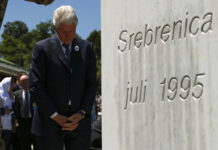

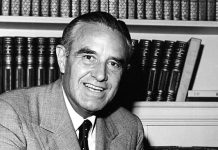
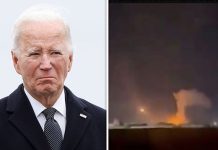
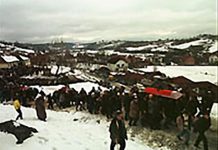
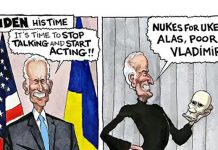

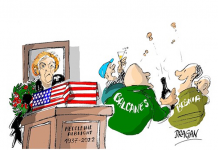
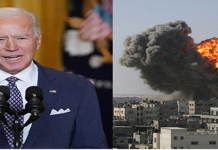

[…] As CAM previously reported, Biden was mentored as a “twenty-nine-year-old kid” in the Senate in the early 1970s by W. Averell Harriman, one of the fathers of the Cold War. […]
“Hail Caesar!” (What a mess!)
Here is a short video related to the Kosovo war.
https://www.youtube.com/watch?v=UsRkqnFn8DA